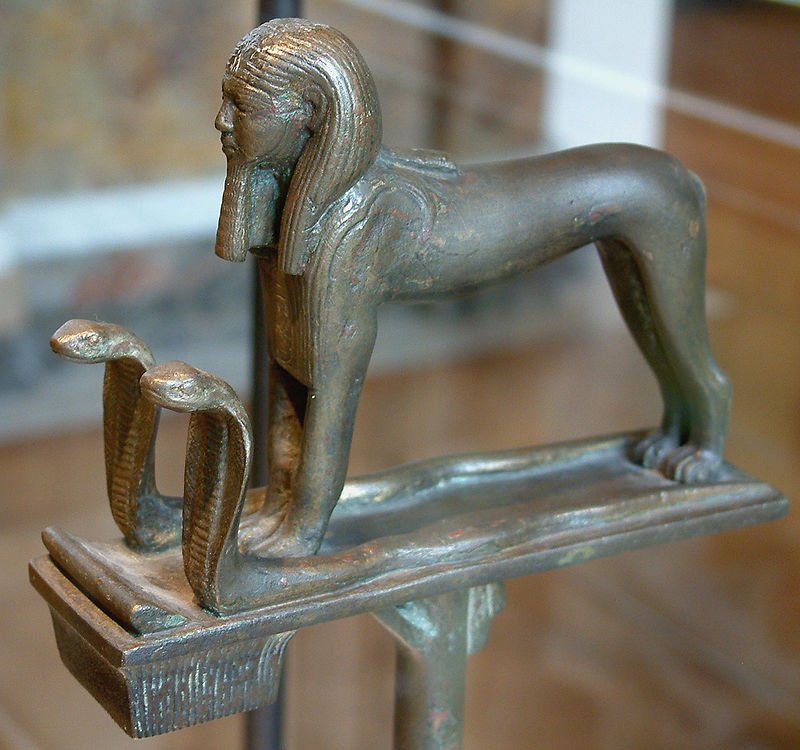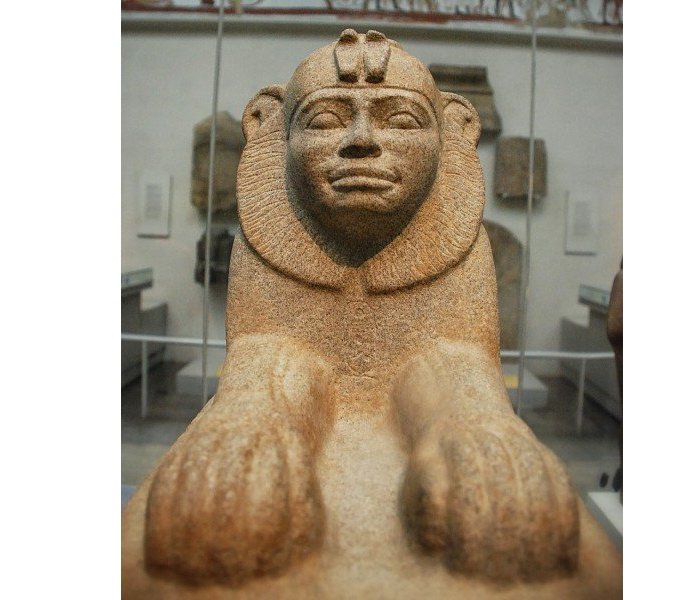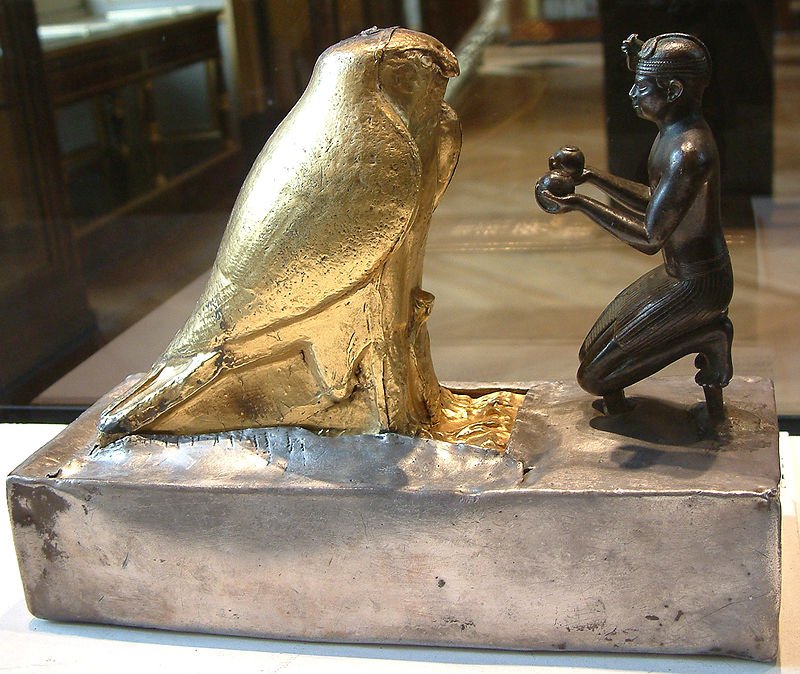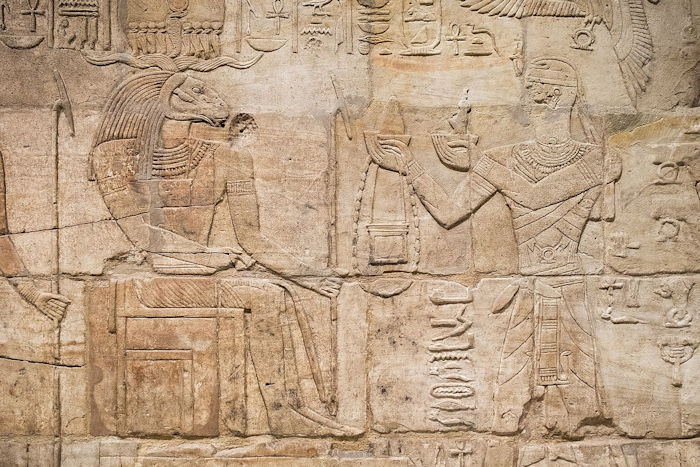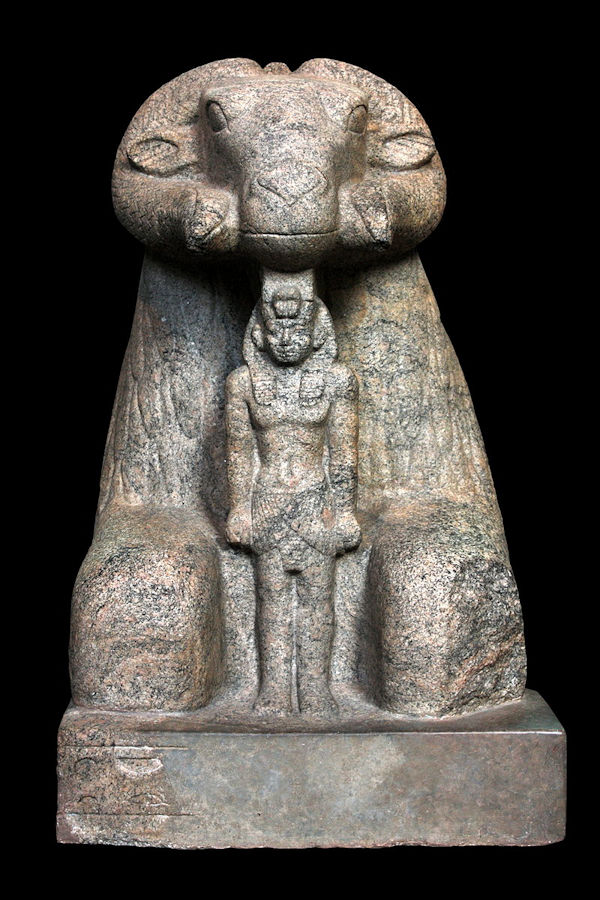Taharqa – The Most Powerful Of The Black Pharaohs
Ellen Lloyd - AncientPages.com - Ancient Egypt is often depicted as an autonomous, stand-alone realm that remained untouched and unaffected by its surrounding African cultures.
There is, however, historical evidence that the balance of power shifted, where the cultures of Egypt and the rest of Africa met and mingled, prompting a revival and reinterpretation of Egyptian customs, gods, and cultural modes of expression.
Taharqa as a sphinx. Credit: Wikipedia/Louvre Museum - CC BY-SA 3.0
For more than 2,000 years, Egypt was the stronger player in the balance of power between itself and its neighboring kingdom to the south, Nubia.
Taharka was the most powerful of the black pharaohs
Taharqa was the son of Piye and the cousin and successor of Shebitku. He was a pharaoh of the Ancient Egyptian 25th dynasty and king of the Kingdom of Kush in Northern Sudan. He reigned between 690 and 664 BC.
Taharqa, "The Black Pharaoh," focuses on a particular chapter in the history of Egypt: from around 750 BCE and in the century that followed, the Nubian rulers upset this balance, seizing the power of Egypt.
Taharqa - life and death of the pharaoh
When Shabaka conquered Lower Egypt and became Nubian king, he was accompanied by his nephew Taharqa, who was about age 20. Later, during Shabaka's reign as pharaoh, Egypt confronted the growing might of Assyria on the battlefield.
During this encounter, Taharqa was at the head of the Egyptian army. However, from a historical point of view, it remains unclear whether the two forces fought. Taharqa's brother Shabataka succeeded Shabaka, making Taharqa his coregent to ensure his succession. About 688 BC, approximately 23 years after the Nubian rule had been imposed over Egypt, Taharqa assumed the throne in his own right.
The next few years were peaceful. Taharqa wanted to control and know about significant events in the neighboring Asian countries. He, therefore, decided to move his capital to Tanis in the Delta.
Granite sphinx of Taharqa, 25th Dynasty, c. 690-664 BC. This statue from Kawa (Temple T) in Sudan shows the Pharaoh's face on a Lion figured sphinx, a form of royal representation borrowed from Middle and New Kingdom art. Credit: Narcissistic Nubian - CC BY-SA 4.0
By 671 BC. Egypt and Assyria again approached a confrontation, so Taharqa prepared to fight for the continued survival of Egypt. But the Assyrian king, Esarhaddon, crossed the Sinai Desert and defeated Taharqa's army on the frontier. In 2 weeks, he was besieging Memphis. The Egyptian military crumbled under the attack of the better-disciplined Assyrian army, armed with iron weapons.
Taharqa fled to Upper Egypt, leaving Esarhaddon to take control of Lower Egypt. Two years later, Taharqa returned with a fresh army and managed to recover possession of the Delta. Still, this success was short-lived, and Esar-haddon's successor, Ashurbanipal, drove Taharqa south again.
It was his final defeat, and he never again tried to campaign in the north. Egypt then entered into a long era of successive foreign rulers.
Taharqa was described by the Ancient Greek historian Strabo as having "Advanced as far as Europe" and (citing Megasthenes) even as far as the Pillars of Hercules in Spain.
Taharqa offers wine jars to Falcon-god Hemen. Image credit: Guillaume Blanchard. Credit: Credit: Wikipedia/Louvre Museum - CC BY-SA 3.0
In biblical depictions, he is the savior of the Hebrew people, as they are being besieged by Sennacherib (Isaiah 37:8-9, & 2 Kings 19:8-9).
Taharqa died in Thebes in 664 BC and was buried at Nuri - North Sudan. His successor was Tantamani, a son of Shabaka.
Evident archaeological traces of the Nubians in ancient Egypt
During his period of Egyptian rule, Taharqa encouraged many architectural projects. The same can be said about his Nubian predecessors. He erected monuments at Karnak, Thebes, and Tanis in Lower Egypt and built several prominent temples in Cush, Egypt's neighbor to the south. Cush played an important role in biblical history.
Pharaoh Taharqa and the gods of Thebes. Standing on the left, he offers "a white loaf" to his father Amun-Re, who is accompanied by Mut, Khonsu, and Montu, Kawa Temple. Credit: Anthony Huan - CC BY-SA 2.0
According to 2 Kings 19:9, "Tirhakah, King of Cush," came to the aid of Hezekiah against Sennacherib, king of Assyria, when his forces laid siege to Jerusalem in 701 BC.
Without such aid, it is hard to imagine that the Kingdom of Judah would have survived.
Taharqa's large temple in Kawa was built on the orders of Taharqa and dedicated to the sun and fertility god Amun-Re. It was intended to give help Taharqa in ruling over his vast kingdom.
It was abandoned in the 3rd century AD and lay buried in sand until excavations in 1930.
Taharqa's shrine is the largest intact Egyptian building in this country.
Archaeologists excavating in Egypt have discovered temples with Nubian inscriptions and highly sophisticated Nubian artifacts inside tombs and palaces. Many archaeological finds were excavated in Meroë and Kawa in present-day Sudan.
Granite statue of Amun in the form of a ram protecting King Taharqa, British Museum. Credit: Rama - CC BY-SA 2.0 fr
Archaeologists and historians have been working hard to preserve the ancient Nubian legacy.
The invading forces from the south appear almost more Egyptian than the Egyptians themselves. Pyramids are built, old traditions and gods are revived, and the new regime appropriates hieroglyphs and Egyptian iconography.
African roots of the Nubians are apparent in connection with their funerary customs and how their culture remained strongly influenced by Egypt even after they retreated to Nubia.
These fascinating findings show that Egyptian and African traits and cultures fuse.
Updated on March 06, 2023
Written by - Ellen Lloyd – AncientPages.com
Copyright © AncientPages.com All rights reserved. This material may not be published, broadcast, rewritten or redistributed in whole or part without the express written permission of AncientPages.com
Expand for referencesMore From Ancient Pages
-
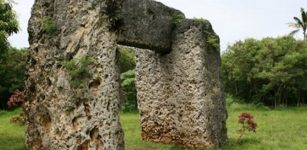 Polynesian Stonehenge: Enigmatic Ha’amonga ‘a Maui Trilithon Of Tonga
Civilizations | Sep 11, 2018
Polynesian Stonehenge: Enigmatic Ha’amonga ‘a Maui Trilithon Of Tonga
Civilizations | Sep 11, 2018 -
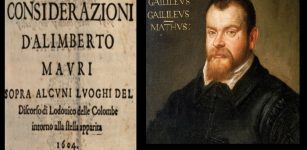 Galileo Galilei Wrote A Controversial Astronomical Treatise Using A Pseudonym
News | Oct 6, 2022
Galileo Galilei Wrote A Controversial Astronomical Treatise Using A Pseudonym
News | Oct 6, 2022 -
 Mysterious Otherworldly Creatures Witnessed By Biblical Prophet – What Happened?
Biblical Mysteries | Jun 30, 2020
Mysterious Otherworldly Creatures Witnessed By Biblical Prophet – What Happened?
Biblical Mysteries | Jun 30, 2020 -
 Traces Of Viking Raids Remain Visible In Modern Russian Economy And Politics
Archaeology | Feb 9, 2022
Traces Of Viking Raids Remain Visible In Modern Russian Economy And Politics
Archaeology | Feb 9, 2022 -
 Mount Ararat Was Once Located By The Sea – Study Of Palm Leaves Reveals
Archaeology | Jul 18, 2020
Mount Ararat Was Once Located By The Sea – Study Of Palm Leaves Reveals
Archaeology | Jul 18, 2020 -
 Secret History Of The Micmac – The Mysterious Red Earth People
Civilizations | Jun 22, 2020
Secret History Of The Micmac – The Mysterious Red Earth People
Civilizations | Jun 22, 2020 -
 10 Ancient Shipwrecks And Several Underwater Artifacts Found Around The Island Of Kasos
Archaeology | Mar 14, 2024
10 Ancient Shipwrecks And Several Underwater Artifacts Found Around The Island Of Kasos
Archaeology | Mar 14, 2024 -
 World Map Of Neanderthal And Denisovan DNA In Modern Humans
DNA | Apr 13, 2023
World Map Of Neanderthal And Denisovan DNA In Modern Humans
DNA | Apr 13, 2023 -
 On This Day In History: American General Benedict Arnold Commits Treason – On Sep 21, 1780
News | Sep 21, 2015
On This Day In History: American General Benedict Arnold Commits Treason – On Sep 21, 1780
News | Sep 21, 2015 -
 Nerva: ‘Pater Patriae’ – Aging Roman Emperor Who Succeeded In Time Of Crisis
Featured Stories | Jan 3, 2020
Nerva: ‘Pater Patriae’ – Aging Roman Emperor Who Succeeded In Time Of Crisis
Featured Stories | Jan 3, 2020 -
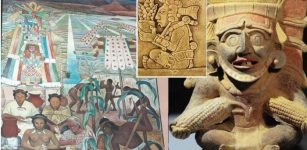 Yum Kaax, Mayan God Of Agriculture, Lord Of Woods And Caretaker Of Animals
Featured Stories | Jul 15, 2020
Yum Kaax, Mayan God Of Agriculture, Lord Of Woods And Caretaker Of Animals
Featured Stories | Jul 15, 2020 -
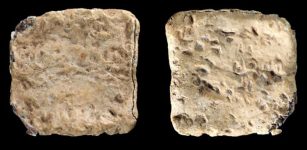 Rare ‘Cursed’ Tablet Predating The Dead Sea Scrolls Discovered On Mount Ebal Could Re-Write History – Scientists Say
Archaeology | Mar 25, 2022
Rare ‘Cursed’ Tablet Predating The Dead Sea Scrolls Discovered On Mount Ebal Could Re-Write History – Scientists Say
Archaeology | Mar 25, 2022 -
 Connection Between Viruses And Ancestors Of All Complex Life Has Been Found
Archaeology | Jul 1, 2022
Connection Between Viruses And Ancestors Of All Complex Life Has Been Found
Archaeology | Jul 1, 2022 -
 Top 10 Archaeological Discoveries 2023
Archaeology | Dec 27, 2023
Top 10 Archaeological Discoveries 2023
Archaeology | Dec 27, 2023 -
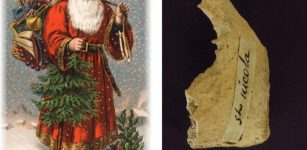 Examined Ancient Bone Suggests Santa Claus Was Real
Archaeology | Dec 8, 2017
Examined Ancient Bone Suggests Santa Claus Was Real
Archaeology | Dec 8, 2017 -
 Were Neanderthals Really As Well Adapted To A Life In The Cold As Previously Assumed? New Study
Archaeology | Apr 26, 2022
Were Neanderthals Really As Well Adapted To A Life In The Cold As Previously Assumed? New Study
Archaeology | Apr 26, 2022 -
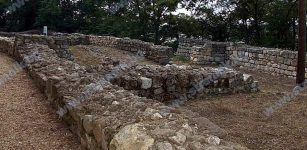 Fortress Wall Of Ancient Roman City Of Sexaginta Prista Discovered
Archaeology | Apr 16, 2016
Fortress Wall Of Ancient Roman City Of Sexaginta Prista Discovered
Archaeology | Apr 16, 2016 -
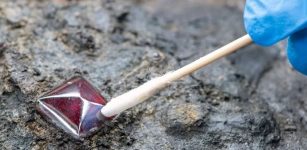 Anglo-Saxon Harpole Treasure Reveals More Secrets – Unique Medieval Silver Cross Found
Archaeology | Jan 31, 2023
Anglo-Saxon Harpole Treasure Reveals More Secrets – Unique Medieval Silver Cross Found
Archaeology | Jan 31, 2023 -
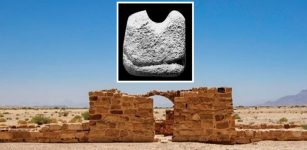 World’s Oldest Chess Piece Discovered At Humayma In Jordan?
Archaeology | Nov 26, 2019
World’s Oldest Chess Piece Discovered At Humayma In Jordan?
Archaeology | Nov 26, 2019 -
 First Human Culture Lasted 20,000 Years Longer Than Thought – New Study
Archaeology | Jan 11, 2021
First Human Culture Lasted 20,000 Years Longer Than Thought – New Study
Archaeology | Jan 11, 2021

